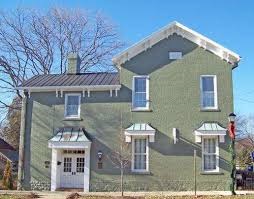Collaborative effort researchers assessed the harmful effects of indoor pollution in order to make recommendations on how best to monitor and negate these outcomes.
Dr Prashant Kumar explained, “When we think of the term ‘air pollution’ we tend to think of car exhausts or factory fumes expelling grey smoke. However, there are actually various sources of pollution that have a negative effect on air quality, many of which are found inside our homes and offices. From cooking residue to paints, varnishes and fungal spores the air we breathe indoors is often more polluted than that outside.”
In 2012 indoor air pollution was linked to 4.3 million deaths globally, compared with 3.7 million for outdoor air pollution. Urban dwellers typically spend 90% of their time indoors, and this has been linked to ‘Sick Building Syndrome’ where dwellers exhibit a range of ill health effects related to breathing indoor air. Whether the use of coal and wood for cooking, to microbial contaminants including bacteria and viruses these effects include respiratory disease and reduced cognitive function.
“It is essential that we are able to effectively monitor indoor air pollution so that we can better understand when and where levels are worst, and in turn offer solutions to make our air healthier,” continued Dr Kumar.
“Sometimes the solution to this will be as simple as opening a window, but without knowledge at the right time these simple steps are often skipped. With this research we are calling for greater importance to be placed on ensuring buildings are built with indoor pollution monitoring in mind. As we enter the age of smart cities this is one way in which technology will actively benefit health.”
In another paper published earlier this month, Dr Kumar and PhD student, Anju Goel, also found that outdoor air pollution was at a high where buildings were located at traffic intersections. Even where there was low traffic volume, traffic intersections with densely built up surroundings showed twice the concentration than at open junctions. Exposure to these concentrations showed that ground floor dwellings in these areas were exposed to twice as many harmful particles.
Dr Kumar concluded, “This has important implications for town planning and we should consider whether we really want schools, offices or hospitals to be built within these environments. Most people may not even consider what they or their children are breathing when they sit down at their desks each morning. A technology will help ensure that while we are hard at work our buildings are also working to protect us from harmful pollutants that affect both mind and body.”
Source: Science daily
N.H.Kh

